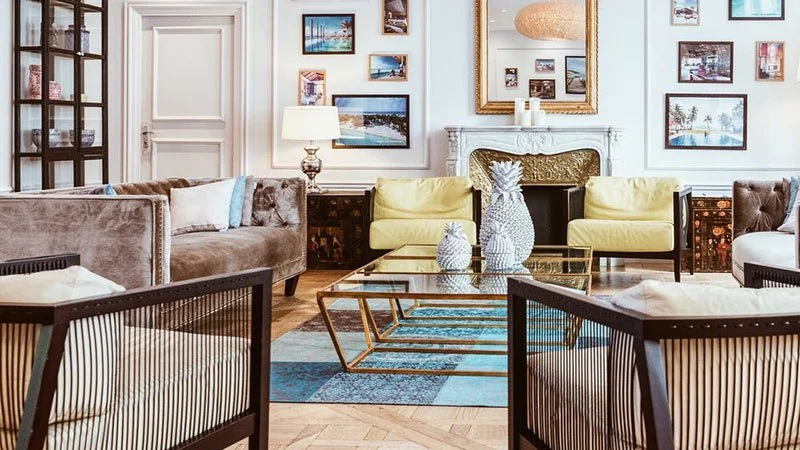The 7 elements of interior design and how to use them
For me, Interior Design is creating an oasis which makes the best use of a space whilst meeting the needs of the user. The below quote really characterises what interior design means for me;
“In addition to enhancing the appearance of a room, getting these elements to work together in harmony will also bring an increased functionality. To start, an interior designer will assess the room according to these interior design elements, and then use them to disguise or enhance the various features and flaws of the space. As a minimum, the following seven elements should always be considered in the creation of any interior.”
A well-designed interior design should make the best use of 7 key elements; space, light, form, texture, colour, furniture and objects.
Space
In interior design space is the area which is available to work within. This can be worked out using the length, width and height of a room. Space can be further split into positive and negative space. Positive space can be used by objects and negative is the space between the objects. How much actual positive and negative space that will be used is determined by the availability of the space and the requirements and style choices of the client.
Light
Lighting is key to interior design whether this is natural or manmade lighting. Natural lighting can be achieved from doors and windows however in some cases cannot always be changed as is part of the structure of a building. Manmade lighting can set the mood and tone for a room and certain types of light fixtures or lamps can become a feature in their own right. However, the needs and purpose of the room itself will determine the type of lighting that needs to be used. For example, a child’s bedroom will require different lighting to that of a living room and a home office again different from a home cinema.
Form
Form in interior design refers to shapes, the shape of the room and the objects within it. Generally, “there are two types of forms – Geometric (man-made) and Natural (organic).”
Texture
Texture can add another dimension to a room and comes in two forms; visual and actual. It can be cushions, throws, wallpapers, wallcoverings and rugs.
Colour
Colour can transform a room from mediocre to an exceptional room. The colour scheme of a room is again determined by the function of a room and very much by the likes and dislikes of the client. Often dining rooms can use bold colours whereas kitchen areas may be more neutral.
Furniture & Objects
The type of furniture and objects in a room, depend on the style and needs of that room for the client. There is such an array of goods on the market and it is important to choose the right items to transform a room well.
Get in Touch
If you need any guidance in incorporating the 7 key elements of interior design into your space, then get in touch.

